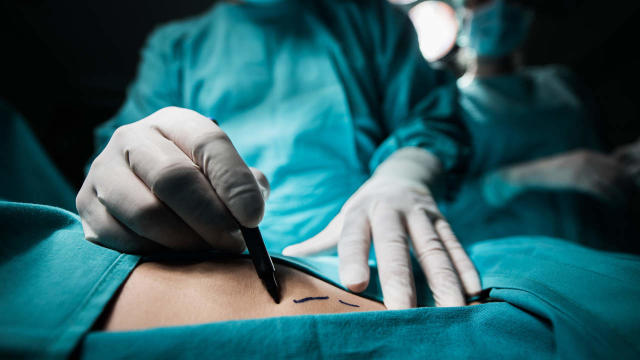What to expect from best mammoplasty surgeon in Iran
1. Thorough Consultation:
– The best mammoplasty surgeon in Iran should conduct a comprehensive consultation to understand your goals, medical history, and current health status.
– They should discuss the different types of mammoplasty, including augmentation, reduction, and lift, and help you choose the best option for your desired outcome.
– The surgeon should provide detailed information about the procedure, including the risks, benefits, and recovery process.
2. Physical Examination:
– The best mammoplasty surgeon in Iran should perform a physical examination of your breasts to assess their size, shape, and symmetry.
– They may also take measurements and photographs for documentation and planning purposes.
3. Preoperative Instructions:
– The best mammoplasty surgeon in Iran should provide you with specific preoperative instructions, such as avoiding certain medications, following a healthy diet, and quitting smoking.
– They should also inform you about any necessary medical tests or procedures that need to be completed before surgery.
4. Informed Consent:
– The surgeon should obtain your informed consent before proceeding with the surgery.
– This involves reviewing and signing a document that outlines the risks, benefits, and potential complications of the procedure.
5. Surgical Planning:
– The surgeon should develop a detailed surgical plan based on your goals, anatomy, and the chosen procedure.
– They should discuss the placement of incisions, the type of implants (if applicable), and the expected outcomes.
6. Anesthesia:
– The surgeon should discuss the anesthesia options available for the procedure and recommend the most suitable one for your case.
– They should ensure that you are comfortable with the anesthesia plan and address any concerns or questions you may have.
7. Surgical Procedure:
– The surgeon should perform the mammoplasty procedure in a sterile and controlled environment.
– They should follow the surgical plan and use appropriate techniques to achieve the desired results.
– The surgeon should monitor your vital signs and overall condition throughout the procedure.
8. Postoperative Care:
– The surgeon should provide detailed postoperative instructions, including wound care, pain management, and activity restrictions.
– They should schedule follow-up appointments to monitor your recovery progress and ensure that the results are as expected.
9. Emergency Contact:
– The surgeon should provide you with an emergency contact number or pager so that you can reach them if you experience any complications or concerns after surgery.
Mammoplasty procedure step by step
Step 1: Preoperative Preparation
– The patient undergoes a thorough consultation with the best mammoplasty surgeon in Iran to discuss their goals, medical history, and current health status.
– The surgeon performs a physical examination of the breasts to assess their size, shape, and symmetry.
– The patient is provided with detailed information about the procedure, including the risks, benefits, and recovery process.
– The patient signs an informed consent form after reviewing and understanding the risks and benefits of the surgery.
– The patient follows preoperative instructions, such as avoiding certain medications, following a healthy diet, and quitting smoking.
Step 2: Anesthesia
– The patient is given anesthesia to ensure their comfort and safety during the surgery.
– The type of anesthesia used may vary depending on the patient’s preference and the surgeon’s recommendation.
Step 3: Surgical Procedure
– The surgeon makes incisions in the breasts, typically around the areola or in the crease beneath the breast.
– In the case of augmentation, the surgeon creates a pocket behind the breast tissue or chest muscle and inserts the implants.
– In the case of reduction, the surgeon removes excess breast tissue and reshapes the breasts.
– In the case of a lift, the surgeon removes excess skin and tightens the underlying tissues to improve the shape and position of the breasts.
Step 4: Closure
– The surgeon closes the incisions with sutures or surgical tape.
– Sterile dressings are applied to the wounds.
Step 5: Postoperative Care
– The patient is monitored in a recovery room until they are stable and awake.
– The patient is given pain medication and antibiotics to manage discomfort and prevent infection.
– The patient wears a surgical bra or compression garment to support the breasts and reduce swelling.
– The patient follows postoperative instructions, such as avoiding strenuous activities, keeping the incisions clean and dry, and attending follow-up appointments.
Step 6: Follow-Up Appointments
– The patient attends follow-up appointments with the best mammoplasty surgeon in Iran to monitor their recovery progress and ensure that the results are as expected.
– The surgeon removes the sutures or surgical tape and assesses the healing of the incisions.
– The surgeon provides guidance on breast care, massage techniques, and scar management.
During mammoplasty surgery
During mammoplasty surgery, the patient is typically under general anesthesia, which means they are asleep and pain-free. The exact steps of the surgery will vary depending on the type of mammoplasty being performed (augmentation, reduction, or lift), but the general process is as follows:
1. Incisions:
The surgeon makes incisions in the breasts. The location and length of the incisions will depend on the surgical approach and the patient’s anatomy. Common incision sites include:
- – Around the areola (periareolar incision)
- – In the crease beneath the breast (inframammary incision)
- – In the armpit (transaxillary incision)

2. Implant Placement (Augmentation):
In the case of breast augmentation, the surgeon creates a pocket behind the breast tissue or chest muscle. The pocket is then sized and shaped to accommodate the implants. The implants are inserted and positioned to achieve the desired breast size and shape.
3. Tissue Reshaping (Reduction):
In the case of breast reduction, the surgeon removes excess breast tissue and reshapes the breasts. This may involve removing skin, glandular tissue, and fat. The surgeon aims to create breasts that are proportionate to the patient’s body and achieve a natural appearance.
4. Lifting and Tightening (Lift):
In the case of a breast lift, the surgeon removes excess skin and tightens the underlying tissues. This helps to improve the shape and position of the breasts, creating a more youthful appearance.
5. Closure:
Once the desired breast shape and size have been achieved, the surgeon closes the incisions with sutures or surgical tape. Sterile dressings are applied to the wounds.
6. Bandaging and Support:
The patient is typically fitted with a surgical bra or compression garment to support the breasts and reduce swelling.
Throughout the surgery, the best mammoplasty surgeon in Iran carefully monitors the patient’s vital signs and overall condition to ensure their safety and well-being.

Recovery after mammoplasty surgery
Recovery after mammoplasty surgery typically involves the following stages:
1. Immediate Postoperative Period:
- – The patient is monitored in a recovery room until they are stable and awake.
- – Pain medication and antibiotics are administered to manage discomfort and prevent infection.
- – The patient wears a surgical bra or compression garment to support the breasts and reduce swelling.
2. First Few Days:
- – The patient experiences some pain, swelling, and bruising around the breasts.
- – They may have difficulty moving their arms and shoulders due to the swelling.
- – Rest and pain medication are recommended to manage discomfort.
- – The patient should avoid strenuous activities and keep the incisions clean and dry.
3. First Few Weeks:
- – The swelling and bruising gradually subside.
- – The patient can resume light activities, but should avoid heavy lifting and strenuous exercise.
- – They should continue to wear the surgical bra or compression garment as directed by the surgeon.
- – Follow-up appointments with the surgeon are scheduled to monitor the healing process and remove any sutures or surgical tape.
4. Months 1-3:
- – The breasts continue to heal and soften.
- – The patient can gradually increase their activity level and return to most of their normal activities.
- – They should continue to massage the breasts and follow the surgeon’s instructions for scar care.
5. Final Result:
- – The final result of the mammoplasty surgery is typically achieved within 3-6 months.
- – The breasts should have a natural appearance and feel, and the patient should be satisfied with the outcome.
It is important to note that the recovery process can vary from person to person. The best mammoplasty surgeon in Iran will provide specific instructions and guidance to help the patient achieve the best possible outcome.

